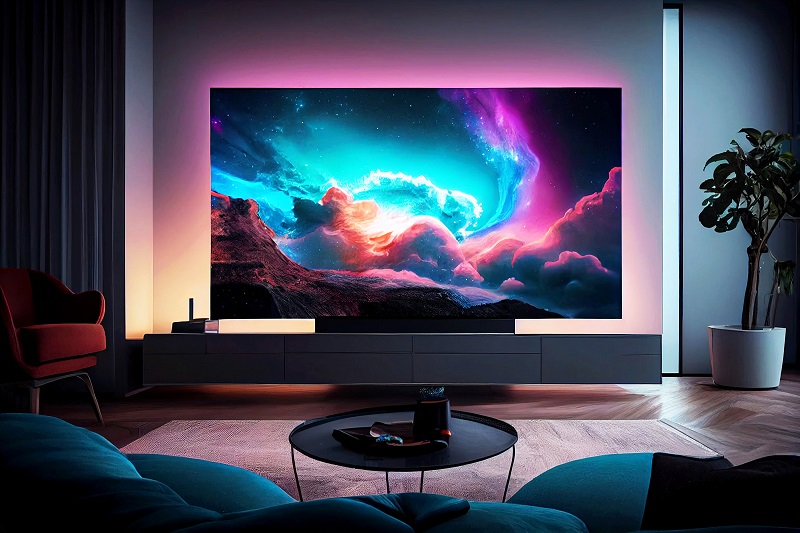
What is Mini LED?
Everything about the new LED-technology in a nutshell
by Ralf Helfenstein | reading time: 2 minutes

OLED, QLED, Neo QLED, NanoCell or Micro LED and Mini LED: Terms that get frequently thrown around in the TV industry. At first glance, it's often unclear whether these are marketing gimmicks or real innovations. Confusion is almost guaranteed.
Mini LED technology, however, is not just a marketing ploy. Mini LED stands for "Miniature Light Emitting Diode" – a miniature version of the conventional LED. In 2019, TCL introduced the first Mini LED television to the market. Since then, the technology has been widely discussed and is often (incorrectly) mentioned alongside Micro LED in the same discussions. But what exactly is behind this new technology? We dive into the topic and summarize the key points for you.
Mini LEDs: small but excellent
Mini LEDs live up to their name: compared to conventional LEDs, Mini LEDs are less than 0.2mm in diameter. This allows for several tens of thousands of Mini LEDs to be used in the backlighting of a television, enabling the backlight to be divided into thousands of zones (Direct LED). For example, LG’s 86” QNED TV incorporates 30'000 Mini LEDs divided into 2'500 zones (source: LG).
By comparison, a regular LCD TV with edge-lit LEDs (Edge LED), which only allows for a few imprecise zones, typically uses around 500 to 1'000 conventional LEDs.
Higher contrast with "local dimming"
Mini LEDs are grouped into zones that can be individually controlled based on the image content, enabling "local dimming." This means specific areas of the screen can be made brighter or darker independently, resulting in deeper blacks and brighter whites. In short, this leads to improved contrast.
Higher brightness
Due to their sheer number, Mini LEDs can also achieve peak brightness levels. According to independent tests, the already mentioned LG TV can reach brightness levels up to 4'000 nits.
Energy efficiency
Thanks to the finer control of the backlighting, energy can be saved: in areas with dark content, brightness can be reduced accordingly (down to zero brightness for black areas).
Mini LED vs. OLED: comparable?
OLED displays offer excellent contrast due to self-emissive pixels, even when viewed from sharp angles. However, their brightness is limited to around 1'000 nits, and extensive measures are needed to minimize burn-in effects. LCDs with Direct LED backlighting offer very high brightness and also very good contrast, but only in specific zones and not pixel-accurate. Furthermore, contrast significantly decreases when viewed from sharp angles.
Thus, it's important to consider the ambient brightness conditions: for TVs used in a home theater in a darkened room, an OLED display is recommended; for all other applications, an LCD TV is the suitable option.
Why aren't Mini LEDs used everywhere yet?
Producing displays with Mini LEDs is very complex and costly due to the high number of LEDs, the additional logic required to determine the brightness of individual zones based on the image content, and the complex control of each backlighting zone. As a result, the significantly higher unit price makes this technology unsuitable for a wide range of applications.
What about the future?
While mini LEDs are currently mainly used in high-end televisions, monitors and mobile devices such as tablets and laptops, they could find their way into a variety of other areas in the future. As demand increases and technology advances, the production costs for mini LEDs are expected to fall. It therefore remains to be seen how the new LED technology will establish itself in other markets in the future.

